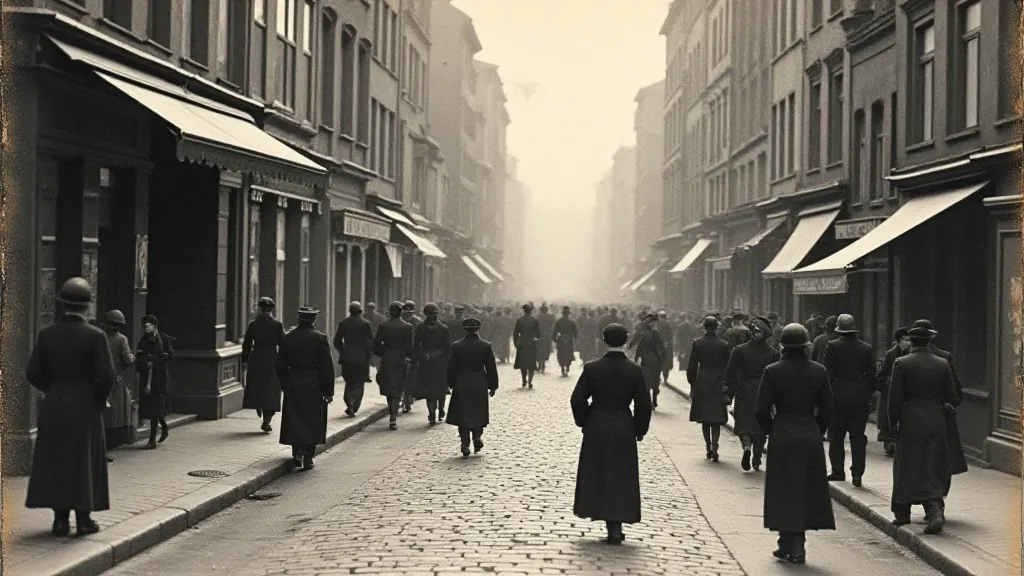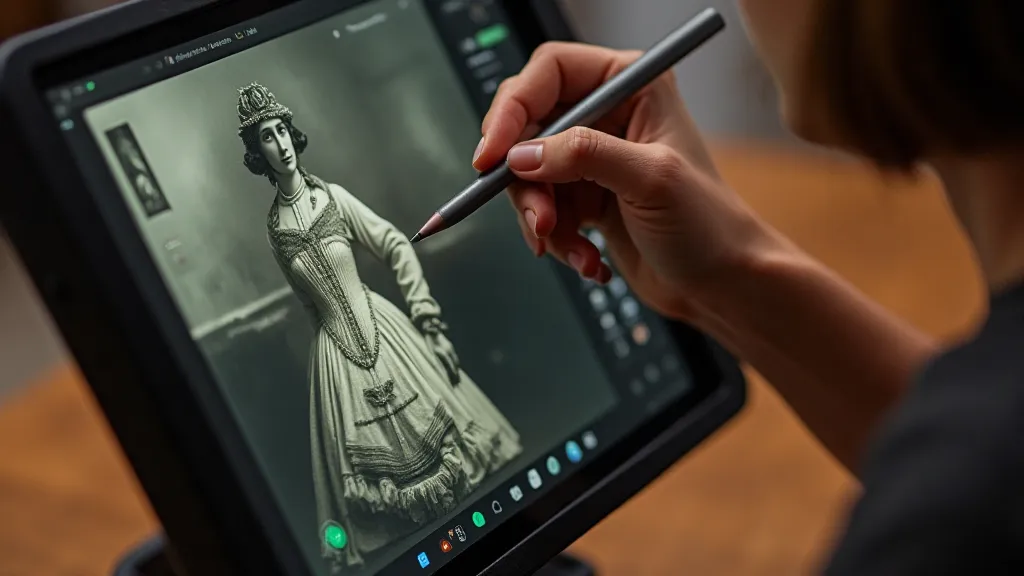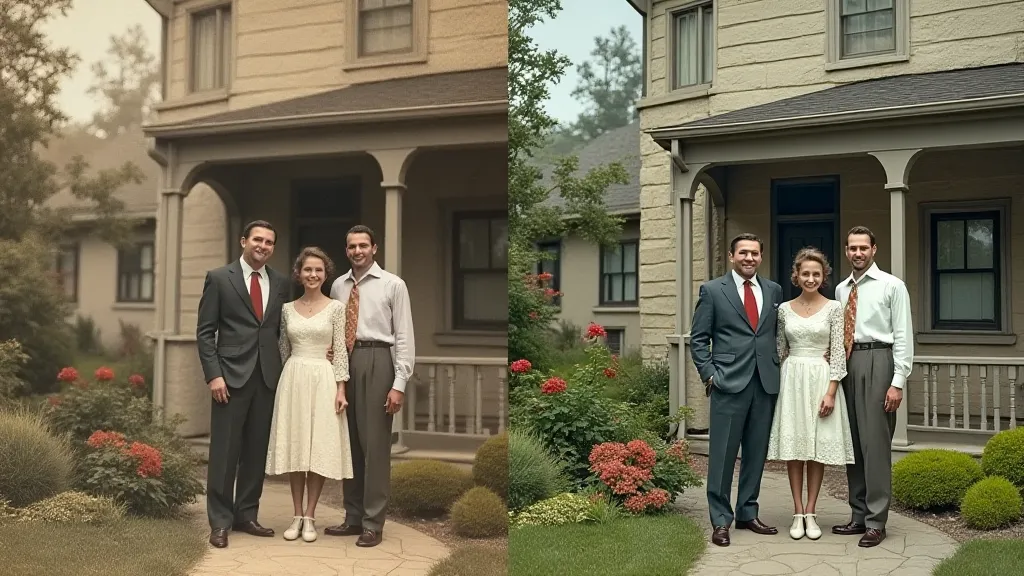The Silent Dialogue: Understanding the Absence of Color in Historical Photographs
There's a particular stillness that pervades antique postcards. Not a quietness born of emptiness, but a profound silence stemming from the very absence of color. They whisper of a time when the world was documented in shades of grey, a time before the vibrant hues we take for granted splashed across our screens and defined our visual landscape. For those of us dedicated to postcard colorization, understanding this silence isn't merely an artistic consideration; it's the foundation upon which we build our work. It’s about appreciating what was lost, and thoughtfully considering what we might restore.
My fascination with this silence began, surprisingly, not with postcards, but with my grandfather’s accordion. A beautifully crafted instrument, its bellows dark with age, its keys a faded ivory. He's long gone, but the accordion remains, a tactile link to a past meticulously preserved. Handling it, feeling the grain of the wood, hearing the echo of its melodies, I realized that objects don’t just *exist*; they carry stories. And those stories are profoundly shaped by the circumstances of their creation and preservation.
Similarly, antique postcards are vessels of history, capturing moments in time with a raw honesty that's often softened by modern color photography. Imagine the photographer, meticulously adjusting the plate, choosing the lighting, composing the scene, all within the constraints of the available technology. There was a deliberate process to capturing an image – a tangible connection between the artist and the subject, absent in the instant gratification of today’s digital age. These weren't snapshots; they were deliberate portraits of a world perceived through a specific lens – literally and figuratively.

The Cultural Significance of Monochrome
The dominance of black and white photography wasn’t merely a technological limitation; it was a cultural aesthetic. For decades, it *was* how the world was seen. It shaped perceptions, influenced artistic movements, and defined a visual language. Think of the iconic images of the Great Depression, the stark portraits of Dorothea Lange, the documentary photography of Henri Cartier-Bresson – all powerful, unforgettable, and rendered in monochrome. The absence of color imbued these images with a certain gravity, a sense of timelessness, a rawness that color often softens.
During this period, color photography existed, but it was expensive, complex, and often unreliable. It was relegated to niche applications like scientific documentation and experimental art. The widespread adoption of accessible color processes didn’t truly begin until the mid-20th century, fundamentally altering how we consume and interpret visual information. Consider the shift in advertising – the vibrant hues designed to grab attention, the carefully orchestrated palettes meant to evoke specific emotions – all a direct consequence of readily available color photography.
The Ethical Considerations of Colorization
Bringing color back to these historical images is a profound act, laden with ethical considerations. We’re not simply “improving” the photograph; we’re reinterpreting it, adding our own layer of subjectivity. Done carelessly, colorization can feel jarring, inaccurate, and even disrespectful to the original intent of the photographer and the spirit of the era. A wrongly chosen hue can transform a poignant moment into a caricature.
That’s why meticulous research is paramount. We delve into historical records, examine clothing styles, architectural details, and even plant life to ensure the colors we choose are not only aesthetically pleasing but also historically plausible. It's not about imposing our modern color preferences; it’s about recreating a plausible approximation of how the scene would have looked to someone living in that time.
It’s also important to acknowledge the potential for misinterpretation. A colorized image, however well-researched, can be easily taken for granted as a genuine depiction of the past. Transparency is key. Clearly labeling an image as “colorized” allows viewers to appreciate the work as an artistic interpretation rather than a factual record.
The Craft of Restoration and Reimagining

The technical process of postcard colorization is a blend of artistry and technical skill. It begins with careful digital restoration – removing scratches, dust, and other imperfections that have accumulated over time. This involves a deep understanding of digital photo editing software and a keen eye for detail. Then comes the colorization itself – a painstaking process of applying hues, blending tones, and refining details.
We often start with a grayscale conversion, analyzing the tonal range of the original image to understand how light and shadow were captured. This provides a foundation for applying color in a way that feels natural and harmonious. We then use a combination of techniques – masking, blending, and layering – to build up the colors gradually, paying close attention to how different materials reflect and absorb light.
The success of a colorization ultimately lies in its ability to evoke a sense of authenticity. It’s about creating an image that feels both familiar and evocative, that transports the viewer back in time and allows them to experience the past in a new light. It's a dance between respecting the original and adding a layer of interpretation.
Beyond Restoration: A Celebration of the Past
Ultimately, postcard colorization is more than just a technical exercise; it's a form of historical preservation and a celebration of the past. By bringing color back to these faded images, we're not just restoring a photograph; we’re breathing new life into a moment in time. We're giving a voice to those who lived before us and allowing them to connect with a wider audience.
Consider the postcards depicting everyday life – families gathered around a table, children playing in the street, workers toiling in a factory. These are glimpses into the lives of ordinary people, offering a unique and intimate perspective on the past. Colorizing these images allows us to engage with these stories on a deeper emotional level.

The silent dialogue of these black and white photographs speaks volumes about a world lost to time. It’s a testament to the power of visual storytelling and a reminder of the enduring human desire to connect with the past. And in carefully and respectfully adding color, we can amplify that voice, allowing these timeless images to resonate with new generations and remind us of the rich tapestry of human history.





